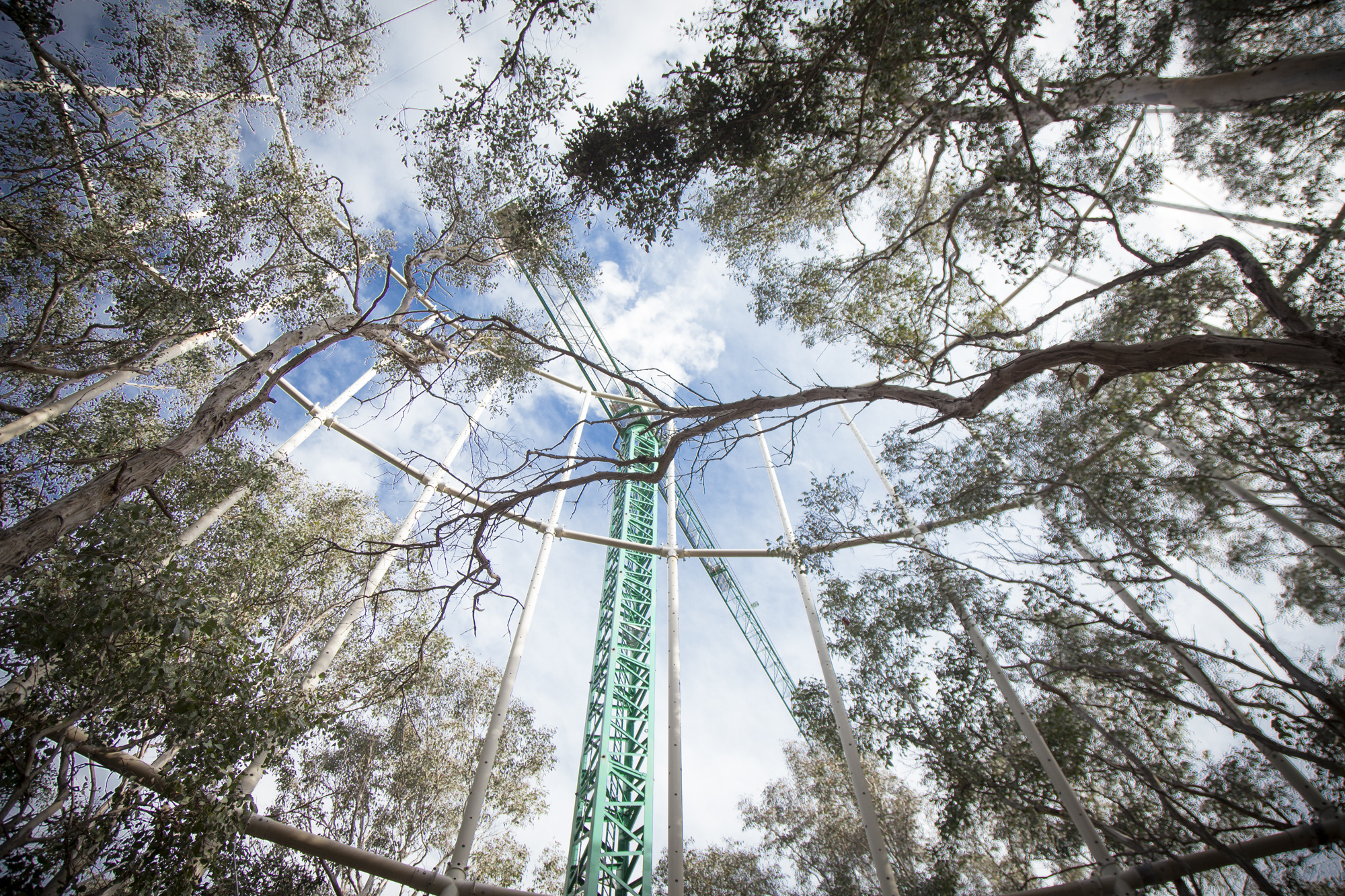News release
From:
Researchers at Western Sydney University have released a groundbreaking study finding that elevated carbon dioxide (CO2) levels, which are expected to boost plant growth, may actually limit extra tree growth in elevated CO2 due to nutrient limitations, specifically phosphorus, held up through soil microbes.
Published today in the esteemed journal Nature, the research suggests that microbes play an important role in making a key nutrient – phosphorus bound to the soil – available to both plants and microbes.
Trees then need to compete with soil microbes for this available amount of nutrients and are losing the battle, ultimately impeding the extra growth potential of trees in CO2-enriched environments.
The study utilised data from the University’s Eucalyptus Free Air CO2 Enrichment (EucFACE) experiment, Australia's largest climate change research project. The trees at EucFACE reach to 25 metres in height, with extra CO2 added through a computer-controlled system in the out-of-doors.
Over six years, researchers exposed a 100-year-old eucalypt woodland on Western Sydney’s Cumberland Plain to elevated carbon dioxide levels. The team undertook in-depth sampling of phosphorus in all parts of the ecosystem to trace its journey from the soil to the trees.
Co-lead author, Dr Kristine Crous from the University’s Hawkesbury Institute for the Environment, said the findings have global significance because phosphorus is a keystone nutrient for trees across large areas of the southern hemisphere, including the tropics and other ecosystems on low phosphorus soil.
“Native plants like Eucalypt trees are renowned for their ability to extract phosphorus from the soil in extremely efficient ways, often likened to obtaining nutrients on the proverbial ‘smell of an oily rag’,” said Dr Crous.
“We have known this for quite some time, but what is unique here is that this occurs because microbes in the soil withhold phosphorus for their own metabolism, leaving Eucalyptus trees with limited nutrition.”
The study showed that microbes did not release enough phosphorous for trees to grow more in elevated CO2, despite evidence that trees tried to bargain for phosphorus by releasing extra carbon into the soil to feed them.
This implies that the soil microbes needed the phosphorus for themselves first with limiting remaining options for the trees by either being more efficient via internal recycling or increasing their phosphorus uptake.
“Insight into how an important nutrient cycles through a forest ecosystem contributes to understanding why we don’t see extra growth in elevated CO2 in low phosphorus soils,” said Dr Crous.
“This study is essential to predict soil phosphorus availability in woodlands and forests and how we can best represent these processes in models to predict plant productivity responses in the future.”
Furthermore, the research team advocates that additional research is required to understand if tropical rainforests at low phosphorus levels might behave similarly.
Co-author Professor David Ellsworth, Hawkesbury Institute for the Environment, said, “the climate, intense biological activity and very ancient geology of Australia and parts of the tropics results in soils that are often depleted of rock-derived nutrients like phosphorus so we can learn about how we can better simulate future productivity of these places.”
For more information, read and download, ‘Microbial competition for phosphorus limits CO2 response of a mature forest’ here https://doi.org/10.1038/s41586-019-0000-0.
Multimedia





 Australia; International; NSW; SA
Australia; International; NSW; SA



